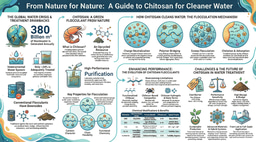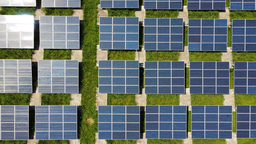The Coral Conservation Crisis
Published in Sustainability

If you had a chance to save the coral reefs, how would you do it?
This is arguably the most heavily debated question among coral reef scientists. Perhaps we should focus on global prevention strategies, such as limiting CO2 emissions. But wait, what about locally sourced issues such as sedimentation and nutrient loading? It is hard to know which way to sail when the sea of stressors is vast and treacherous.
Alexandra Good, Ph.D. Student and Keisha Bahr, Ph.D., from Texas A&M University-Corpus Christi, recently published their review of this debate in SN Applied Sciences. They discuss a systematic approach that combines assisted evolution, risk assessments, and focused management strategies to address the multiple interacting stressors that are driving coral reef decline. Here’s why.
Coral reefs have been in a consistent state of decline, particularly in recent years, as warm water coral bleaching events continue to increase in frequency and severity. Complex interactions of stressors are leading to more synergistic effects on reef systems, meaning that the summed effect of these stressors has a greater impact than the individual stressors alone. These effects are both global (ocean warming, acidification) and local (pollution, urbanization, dredging, nutrient loading, etc.) and their interactions are projected to affect 61% of reef systems worldwide. As daunting as this percentage is, these synergies can be contained through a combination of rehabilitation measures.
First, Good and Bahr address the role of assisted evolution in combatting coral reef decline. Adaptive actions such as manipulating the coral microbiome and selectively breeding corals can contribute to science-based solutions. However, they explain that these actions should be used in tandem with prevention and management strategies and not as stand-alone solutions, as these new technologies still host uncertainties.
Second, they discuss following a structured decision-making framework created by Anthony et al., 2020 to conduct comprehensive risk assessments on high-risk coral reef environments. Risk assessments may be more successful if tailored to individual environments based on the presence/absence of global and local stressors, as there is no “one size fits all” solution. These risk assessments could factor in species-specific environmental tipping points as coral resiliency varies greatly. Location-based risk assessments conducted in various regions, including Hawaiʻi, Australia, and throughout the Indo-Pacific, have proven successful at identifying the most prominent stressors in those areas. This approach could better target funding to combat the identified stressors.
Lastly, Good and Bahr review focused management strategies for considering those local factors likely involved in coral degradation. Previous work has suggested that there should be spatial prioritization in these management strategies, such as marine protected areas (MPAs) and areas of higher resistance to bleaching since these are projected to show more resilience to climate change scenarios. Other approaches in which local managers prioritize coral reef ecosystems based on their higher ecological and social importance, rather than their physical response to bleaching, are another option. Regardless of prioritization decisions, focused management strategies play an important role in preventing coral reef degradation.
From this extensive literature review emerges a clear message: scientists and resource managers should consider location-specific combinative solutions to the multiple, interacting threats coral reefs face today. The way forward may lie in the convergence of multiple, equally important paths.
Good, A.M., Bahr, K.D. The coral conservation crisis: interacting local and global stressors reduce reef resiliency and create challenges for conservation solutions. SN Appl. Sci. 3, 312 (2021). https://doi.org/10.1007/s42452-021-04319-8
Follow the Topic
-
Discover Applied Sciences

This is a multi-disciplinary, peer-reviewed journal for the disciplines of Applied Life Sciences, Chemistry, Earth and Environmental Sciences, Engineering, Materials Science and Physics, fostering sound scientific discovery to solve practical problems.
What are SDG Topics?
An introduction to Sustainable Development Goals (SDGs) Topics and their role in highlighting sustainable development research.
Continue reading announcementRelated Collections
With Collections, you can get published faster and increase your visibility.
Chemistry: Applied Phytochemistry: Characterization, Extraction, and Applications in Food, Pharmaceutical, and Agriculture
Publishing Model: Open Access
Deadline: May 01, 2026
Engineering: Research and Technology Innovations in Industrial Engineering
The Collection aims to present the latest achievements in automation strategies, digitalization, and process efficiency improvement, with particular emphasis on sustainable practices. It covers topics related to modern technologies used in industrial engineering, innovations in production management, and the use of data analysis in improving the efficiency of production systems. It aims to discover the future generation in manufacturing by implementing smart technologies, intelligent systems using up-to-date approaches, and modern software based on IoT, VR/AR, ANN, GA, etc. These technologies allow using data and information throughout the entire life cycle of the product and ensure the creation of flexible production processes that rapidly respond to challenges in demand at low cost to the enterprises as well as to the environment.
This Collection supports and amplifies research related to: SDG 9, SDG 12
Publishing Model: Open Access
Deadline: Dec 31, 2025




Please sign in or register for FREE
If you are a registered user on Research Communities by Springer Nature, please sign in